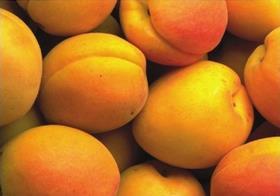
Countless problems in the fruit and vegetable sector stem wholly from an absence of knowledge. In this regard, apricots are no different. The experience of French producer Dominique Gagné, whose company GG is based in Le Barroux in the south-eastern department of Vaucluse, may not be typical, but it is certainly illustrative.
“Many years ago, we sent 10 boxes of apricots to the UK to test the market,” he said. “The fruit was around 72 hours away from ripeness, but the importer, seeing that the apricots were not ready, put them in their banana ripening facility. A few days later, unsurprisingly, the apricots
were cooked.”
It will come as little shock to learn that Gagné no longer sends apricots to the UK market. And although such stories may be unheard of, at least today, it is this sort of gap in expertise that SIPMM Abricot, the French interprofessional department created in February 2012 to steer the country’s apricot sector, is seeking to fill.
“This season we intend to do more marketing and promotion,” says Vincent Faugier, president of the French AOP (association of producer organisations) for apricots and co-president of SIPMM Abricot. “We have produced professional guides, translated into English, for retail buyers. These explain the different production regions and apricot varieties available. As in other segments in the fruit and vegetable sector, the retailers’ heads of department are not sufficiently trained to assist consumers with their purchases. We have decided to train them ourselves.”
Such guides should prove useful, not least given the sheer number of French varieties and the vagaries of France’s three main production areas in Pyrénées-Orientales, Languedoc Roussilon-Provence, and the Rhone valley. In recent years, the sector has made great progress in terms of quality, according to Faugier, who puts this down to innovation and the development of new varieties. “We have the most diverse apricot orchards in the whole of Europe,” he says. “We are searching for taste first and foremost, but it also gives us a long season, from the end of May until the start of September.”
“When we talk about apricots we talk about ‘terroir’,” explains Sabine Alary of Aneefel and co-president of SIPMM Abricot, “because the techniques used are very different according to the soil. There are big differences in taste and shelf life. The Bergeron variety here in Vaucluse is even a different colour to the one produced in the Rhone valley. You wouldn’t tell from looking at them that they are the same variety.”
Bernard Clariana, of Vaucluse grower Clariana, stresses that the UK is not an easy market to work in. “The supermarkets are very demanding. You have to supply exactly what the importer is looking for, which can be difficult. Just because they are the same variety, it doesn’t mean that the apricots will be of the same ripeness. It varies from one growing area to another. For the UK, it is also key to arrive on the market early.”
This last challenge may prove to be the toughest this season, as the cold, wet conditions seen earlier in the year caused delays to the harvest of up to two weeks. Nevertheless, Faugier expects French apricots to maintain their volume on the UK market this year. Unless, of course, Spain and Italy’s forecasts are revised downward, providing a French opportunity. —



